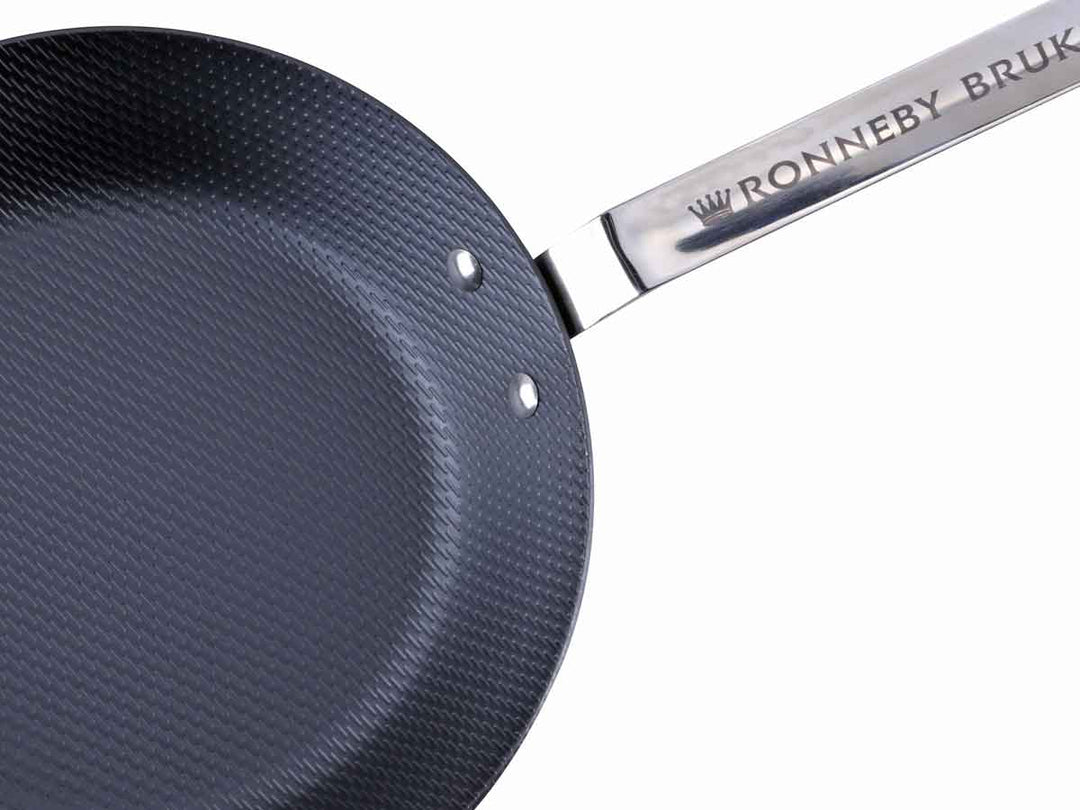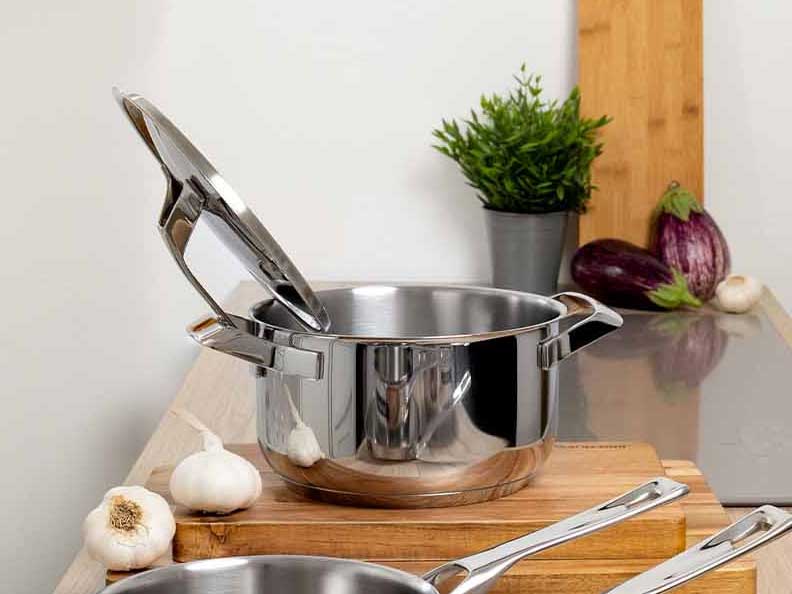Scratches in the hob surface
Scratches in the glass ceramic hob! Is the pan to blame?
Hobs with a glass ceramic surface, whether in radiant heater technology or induction technology, have become indispensable in the modern kitchen. The flat surfaces fit so elegantly and almost seamlessly into the kitchen work surface that this opens up space for completely new kitchen designs. In addition, the surface is easier to clean than the cast-iron plates of the mass-produced electric hobs that were common up until then.
Did the pan/pot cause the scratch?
However, many owners of a glass-ceramic hob will notice after a while that the former shine has gotten noticeable scratches here and there. Although these do not affect the function in any way, they can spoil the joy of the elegant hob for some. The suspect is then quickly identified: the bottom of a pot or pan must have caused the scratches, after all there is nothing else on the hob. And indeed, cookware is involved in causing scratches, but usually only indirectly:
Hard scratches soft
Glass ceramic has a very high hardness. In order to scratch glass-ceramic, the scratching object must be as hard (or harder) than the glass-ceramic. The materials typically used for pots and pans, on the other hand, are "too soft" to scratch the glass ceramic directly. An analogy: a piece of wood does not scratch a stone.
The vast majority of scratches in glass ceramic hobs are caused by small mineral particles, namely grains of sand and dust. Depending on the type, they have a high degree of hardness, which is sufficient to scratch the glass ceramic (Mohs scratch hardness; hard scratches soft).
So if grains of sand get on the hob, it becomes dangerous for the glass-ceramic surface, which has been flawless up to that point: the grains get trapped between the hob and the base of the cookware. If the pot or pan is not lifted before moving, the small particles act like emery. The result: scratches!
"How are grains of sand supposed to get on my hob?!" you might ask. Well, for example from vegetables. Many types of vegetables that grow close to the ground or underground often still have some soil on them when you buy them, think of cauliflower, carrots, for example , Potatoes, onions, leeks, spring onions, mushrooms, lettuce, etc. When spreading out and preparing these vegetables, one or two grains of soil or sand can get onto the work surface, and since the hob fits so nicely into the work surface, it is it is quite possible that some grains find their way onto the glass-ceramic, where it cannot necessarily be identified thanks to the dark colour.
Another way of bringing in grains of sand is, for example, shopping bags. These are easily charged with static electricity. If they are placed on the ground, the smallest particles will quickly cling to them. If you then place the bags on the kitchen worktop at home, it is not a long way for the grains of sand to reach the glass ceramic.
Incidentally, there is a similar phenomenon of scratch formation in a completely different area, namely in cars: There are often ugly scratches and countless fine grooves in the actually very hard glass of the windshield, which in extreme cases in rain and backlight can sometimes cause unpleasant scattered light be able. Why? It's just rubbing soft rubber across the pane. And even the plastic ice scraper is softer than the glass. Well, here too, grains of sand are the culprits; the hard granules are pushed across the windshield by the rubber wiper or the ice scraper, damaging the glass in the process.
Avoid scratches
Follow the hob and cookware manufacturer's usage instructions and avoid moving pots and pans around on the hob. Always lift the cookware before moving it on the hob.
If you also briefly wipe the hob and the contact surface (the outer base) of the cookware with a clean, lint-free cloth (e.g. microfibre) before cooking, you can significantly reduce the risk of scratches.
Take special care with enamel and cast iron
You should always avoid sliding cookware with enamel coating on the hob. The enamel is as hard as glass. And if there are tiny mineral inclusions in the enamel, which happens regularly, scratches can occur.
Likewise, special caution is required with cast iron cookware, because on the one hand it is i.dR. very heavy, so that particles between the cookware and hob are ground with great force, and on the other hand, the surface of the iron cast in sand-based molds can occasionally contain the smallest sand particles, which, if they are on the outer floor, also cause damage when the cookware is pushed could cause scratches.






